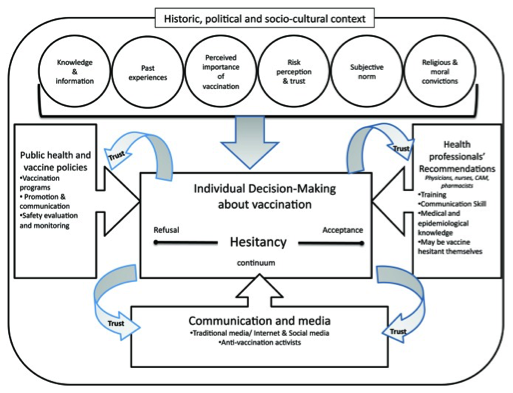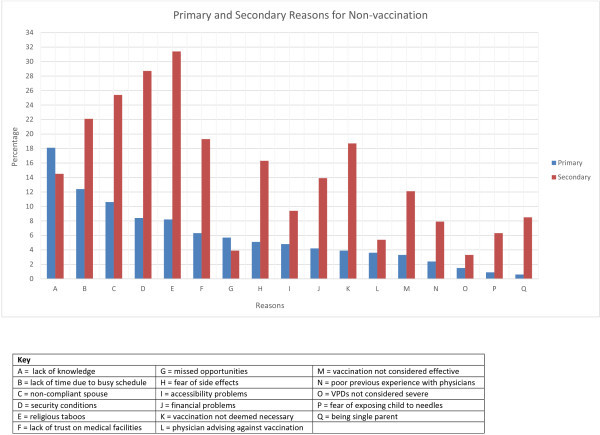FA16 Immunization Module’s Updates
Social hurdles for adminstering vaccines: What can health professions be doing differently?
Vaccinations have been proven an effective method in prevention of disease but they have still have been meet with hesitancy from some of the general population, particularly in recent years. With the spread of diseases such as pertussis and measles outbreaks we must look at the obstacles leading to the populations choosing not to vaccinate. In one study looking for reasons in vaccine hesitancy they looked at factors such as historic, political and socio-cultural context, communication and social media, health professional recommendations and public health and vaccine policies. One overlying theme they found was trust among the forms of communication, health professions and policy makers.
So it brings a questions that not only must we be educating the public but how do we as health care professionals and policy makers convey trust to the public so they are more receptive to the information given to them. One-way of addressing this issue brought about in the study was sharing the policymaking process and the research behind vaccine safety in this way we make the process transparent hopefully giving populations a greater sense of trust. This however is not the only factor that affects populations particularly those in countries underserved where diseases such as polio still are a large problem. In a study done on Pakistan looking at reasons for lack of compliance in polio vaccine regardless of the WHO Expanded Program on Immunization (EPI) it was shown that religious and cultural beliefs and lack of knowledge played a big role in vaccination for pediatric patients. In these circumstances where vaccinations are greatly needed to prevent disease finding a better source of disseminating information that reaches the audience is needed to be further looked into as well as taking into account the cultural and religious beliefs of a population and tailoring campaigns to help alleviated the taboos some cultures hold associated with vaccinations. Overall in order to further promote vaccinations both here and aboard better forms of communicating information on vaccines as well as a better trusting relationships between health professions and the populations must be further looked into.
https://www.ncbi.nlm.nih.gov/pmc/articles/PMC3716633/
https://www.ncbi.nlm.nih.gov/pmc/articles/PMC3906279/




@Erika Becerra This issue is very complex because of the numerous subgroups within a population. Effective vaccination of a population probably will not be achieved in one step, but as you pointed out, trust is key in any action. I agree with you conclusion that communicating information on vaccines as well as a better trusting relationships between health professions and the populations are both necessary in increasing vaccination. I believe that the trusting relationship is key for the population to accept any information physicians share. While trust can be built by simply being personable and caring towards patients, physicians may need to partner with members of the community (religious leaders, political, and other community leaders) to facilitate better relationships and dissemination of information through trusted public figures.
As a side, I though both of your figures were helpful and interesting!
@Erika Becerra I think you nailed it when you talked about trust. The whole medical community relies on public trust. Every time we obtain informed consent, trust is a major factor. A majority of what you wrote about as far as combating stigmas means that task is likely to be a priority for public health officials. It is the challenge of condensing and disseminating years and millions of dollars in research to a level that the average citizen can understand. No doubt that we will hear more about this throughout our training. Again, great post!
@Erika Becerra I enjoy how you presented this problem from multiple fronts. You brought up a good point that there are many reasons people have chosen to avoid vaccinations. In order to promote vaccinations we must acknowledge the many different reasons people may have and address each accordingly. Since a distrust exists not only of vaccines but also of the medical field, we must be careful to approach the situation from the perspective of individuals outside of the medical community. I think your points about alleviating the taboos some cultures hold against vaccinations and the release of information regarding vaccinations would most definitely help in the long run. While the internet is a wonderful way to get information out, it also spreads rumors and false information that may get mixed up with any efforts to alleviate peoples' fears. As this is probably one of the main causes of misunderstandings in the first place, we would have to develop a better, more direct way of conveying information to the public.